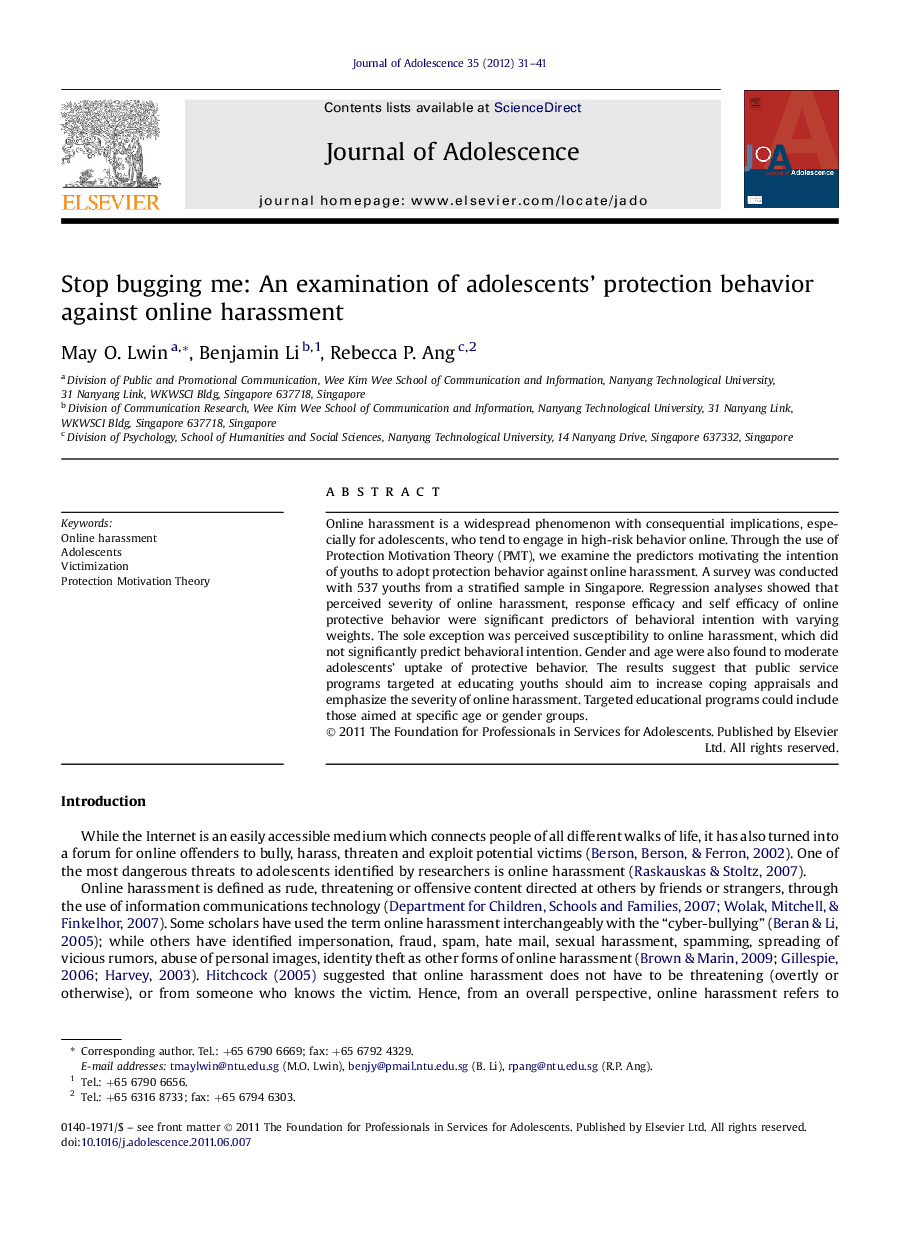| Article ID | Journal | Published Year | Pages | File Type |
|---|---|---|---|---|
| 10436751 | Journal of Adolescence | 2012 | 11 Pages |
Abstract
Online harassment is a widespread phenomenon with consequential implications, especially for adolescents, who tend to engage in high-risk behavior online. Through the use of Protection Motivation Theory (PMT), we examine the predictors motivating the intention of youths to adopt protection behavior against online harassment. A survey was conducted with 537 youths from a stratified sample in Singapore. Regression analyses showed that perceived severity of online harassment, response efficacy and self efficacy of online protective behavior were significant predictors of behavioral intention with varying weights. The sole exception was perceived susceptibility to online harassment, which did not significantly predict behavioral intention. Gender and age were also found to moderate adolescents' uptake of protective behavior. The results suggest that public service programs targeted at educating youths should aim to increase coping appraisals and emphasize the severity of online harassment. Targeted educational programs could include those aimed at specific age or gender groups.
Related Topics
Health Sciences
Medicine and Dentistry
Public Health and Health Policy
Authors
May O. Lwin, Benjamin Li, Rebecca P. Ang,
